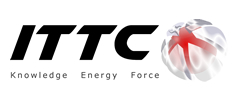Hmo Vs Ppo

Efforts are underway to close the gap and to provide a more equitable system of care. Self-policing of providers by providers is a major part of oversight. Many health care organizations also voluntarily submit to inspection and certification by the Joint Commission on Accreditation of Hospital Organizations, JCAHO. Providers also undergo testing to obtain board certification attesting to their skills. A report issued by Public Citizen in April 2008 found that, for the third year in a row, the number of serious disciplinary actions against physicians by state medical boards declined from 2006 to 2007, and called for more oversight of the boards. Economists Eric Helland and Alex Tabarrok speculate that the increase in costs of healthcare in the United States are largely a result of the Baumol effect.
Finally, the United States tracks investment in the healthcare system in terms of a skilled healthcare workforce, meaningful use of healthcare IT, and R&D output. This aspect of the healthcare system performance dashboard is important to consider when evaluating cost of care in America. That is because in much of the policy debate around the high cost of US healthcare, proponents of highly specialized and cutting edge technologies point to innovation as a marker of an effective health care system. A concern for the health system is that the health gains do not accrue equally to the entire population. In the United States, disparities in health care and health outcomes are widespread.
Examining Programs For Health Life
The WHO study has been criticized, in an article published in Health Affairs, for its failure to include the satisfaction ratings of the general public. The study found that there was little correlation cannabidiol oil between the WHO rankings for health systems and the stated satisfaction of citizens using those systems. WHO staff, however, say that the WHO analysis does reflect system “responsiveness” and argue that this is a superior measure to consumer satisfaction, which is influenced by expectations. Furthermore, the relationship between patient satisfaction and health care utilization, expenditures, and outcomes is complex and not well defined.
They include herbs, massages, energy healing, homeopathy, and, more recently popularized, cryotherapy, cupping, and Transcranial Magnetic Stimulation or TMS. Common reasons for seeking these alternative approaches included improving their well-being, engaging in a transformational experience, gaining more control over their own health, or finding a better way to relieve symptoms caused by chronic disease. They aim to treat not just physical illness but fix its underlying nutritional, social, emotional, and spiritual causes. In a 2008 survey, it was found that 37% of hospitals in the U.S. offer at least one form of CAM treatment, the main reason being patient demand (84% of hospitals). Costs for CAM treatments average $33.9 with two-thirds being out-of-pocket, according to a 2007 statistical analysis.
As of 2013, administration of health care constituted 30 percent of U.S. health-care costs. Other methods of medical treatment are being practiced more frequently than before. This field is labeled Complementary and Alternative Medicine and are defined as therapies generally not taught in medical school nor available in hospitals.
- The company serves more than 16 million members across five states – Illinois, Montana, New Mexico, Oklahoma, and Texas – and employs more than 23,000 people in over 60 local offices.
- It operates in 32 states and three international markets and has more than 15 million managed care members.
- Health Care Service Corporation , a mutual legal reserve company, is the largest customer-owned healthcare insurance company in the US.
As in most other countries, the manufacture and production of pharmaceuticals and medical devices is carried out by private companies. The research and development of medical devices and pharmaceuticals is supported by both public and private sources of funding. In 2003, research and development expenditures were approximately $95 billion with $40 billion coming from public sources and $55 billion coming from private sources.
An Introduction To Painless Products In Health Life
Moreover, CAM treatments covered 11.2% of total out-of-pocket payments on health care . During 2002 to 2008, spending on CAM was on the rise, but usage has since has plateaued to about 40% of adults in the U.S.
Rapid Secrets In Healthcare – An Update
Since healthcare is relatively labor intensive, and productivity in the service sector has lagged that in the goods-producing sector, the costs of those services will rise relative to goods. In March 2010, Massachusetts released a report on the cost drivers which it called “unique in the nation”.
